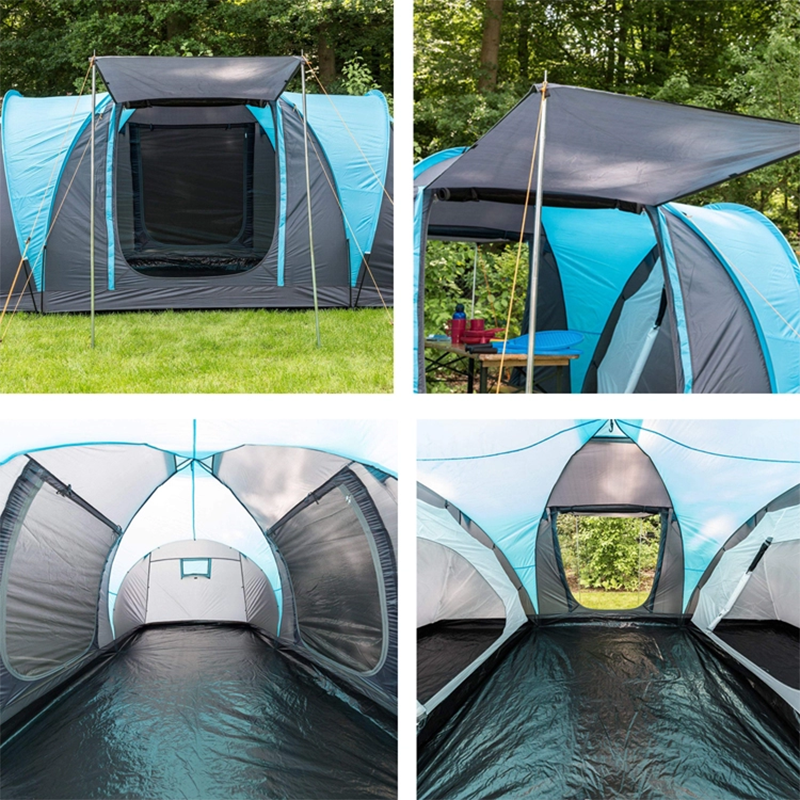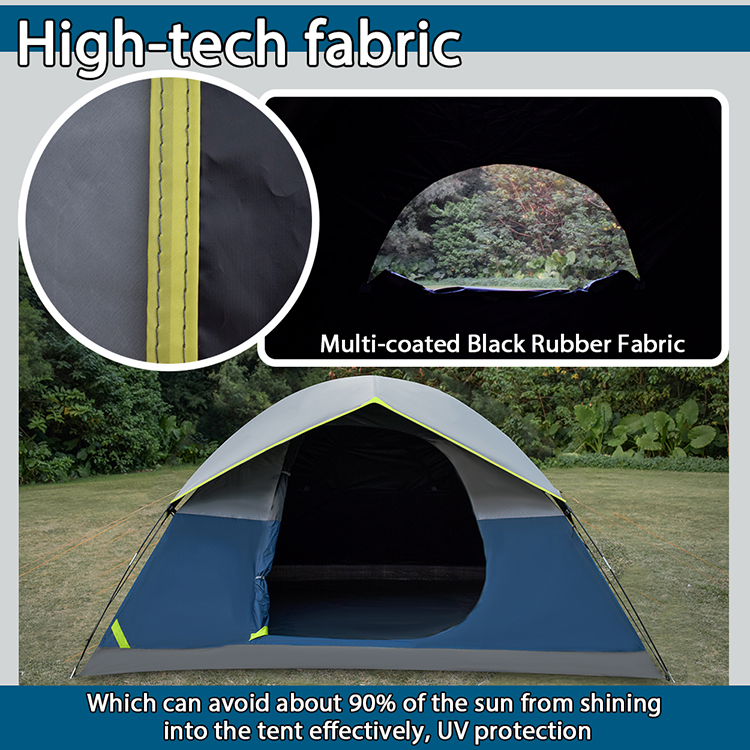The fabrics of tents are mostly polyester spinning fabrics. Generally, 210T polyester spinning and 190T polyester spinning are available in the market. The quality of the tent is based on its thickness and warp and weft density. The technical indicators of waterproof fabrics are based on the degree of waterproofness. In order to enhance the beauty and feel, some manufacturers apply silica gel to the tent, which looks translucent. More importantly, this type of tent is relatively light.
Waterproof is only AC or PU coated on the outside. Generally only used for children or game accounts. Waterproof 300mm is generally used for beach tents/shading tents or cotton tents used for drought and less rain. Waterproof 800mm-1200mm is used for conventional simple camping tents. Waterproof 1500mm-2000mm is used for relatively mid-range tents, which need to travel for many days. Waterproof tents above 3000mm are generally professional tents that have been treated with high-temperature/cold-resistant technologies. Bottom material: Generally, PE is the most common, and the quality depends mainly on its thickness and warp and weft density. It is better to use Oxford fabrics for higher grades, and the waterproof treatment should be at least 1500mm or more.
The inner fabric is generally breathable nylon or breathable cotton. The quality mainly depends on its density. The rainproof performance of the outer tent cloth, this index is still calculated according to the number of mm of water column per square centimeter. Generally, the rainproof tents are above 1500mm water column, which can prevent moderate to heavy rain; individual tents reach 3000-4000mm, which can prevent continuous heavy rain. The high-quality rainproof tarpaulin not only has a high rainproof index, but also has a thick rubber strip at the joint of the awning line to prevent water seepage at the seam. Although the rainproof index of the outer tent is high, ventilation is a problem. Even on a sunny night without rain, after a nap, the inner surface of the tent will still be covered with water droplets, especially when setting up tents on wet ground such as grass. If it accumulates, it will drop into the internal account. Relatively speaking, an external account with a low rainproof index has less internal area water than a high rainproof account. This is the water vapor exhaled by the occupants in the tent, and the water droplets gathered on the inner surface of the tarp from the steam on the ground. Because the tent is rainproof, the rain outside cannot get in, nor can the water vapor inside. So when you get up in the morning, avoid shaking the tent too hard, and be careful of “light rain” inside. However, there are several top tents that use waterproof and breathable materials such as GORE-TEX and BANTEX, which can solve this problem, but they are expensive.




